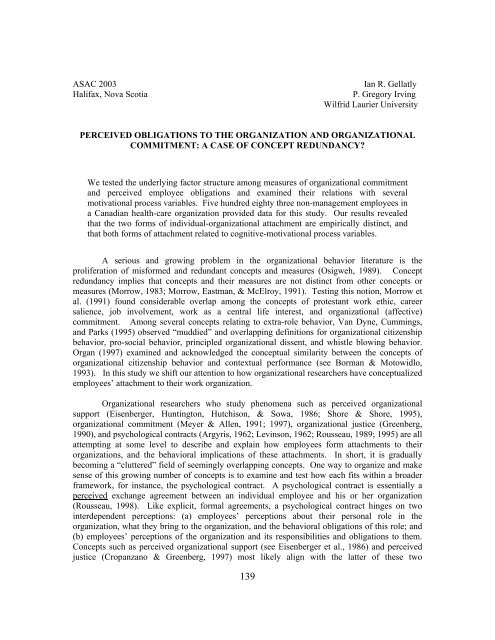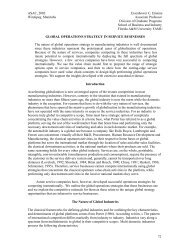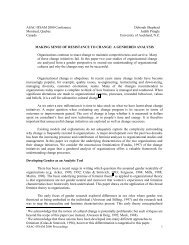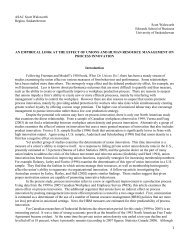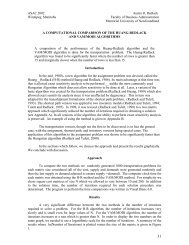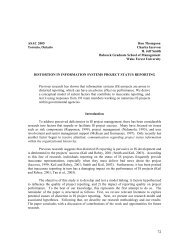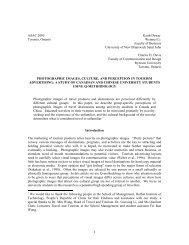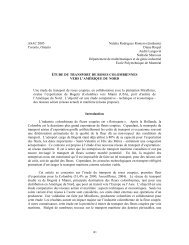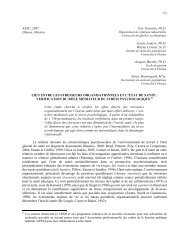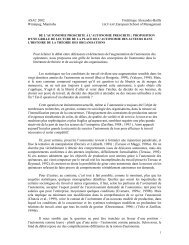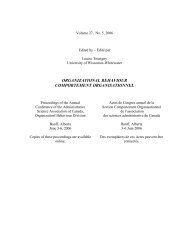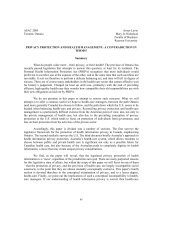Organizational Behaviour Comportement Organisationnel
Organizational Behaviour Comportement Organisationnel
Organizational Behaviour Comportement Organisationnel
You also want an ePaper? Increase the reach of your titles
YUMPU automatically turns print PDFs into web optimized ePapers that Google loves.
ASAC 2003Halifax, Nova ScotiaIan R. GellatlyP. Gregory IrvingWilfrid Laurier UniversityPERCEIVED OBLIGATIONS TO THE ORGANIZATION AND ORGANIZATIONALCOMMITMENT: A CASE OF CONCEPT REDUNDANCY?We tested the underlying factor structure among measures of organizational commitmentand perceived employee obligations and examined their relations with severalmotivational process variables. Five hundred eighty three non-management employees ina Canadian health-care organization provided data for this study. Our results revealedthat the two forms of individual-organizational attachment are empirically distinct, andthat both forms of attachment related to cognitive-motivational process variables.A serious and growing problem in the organizational behavior literature is theproliferation of misformed and redundant concepts and measures (Osigweh, 1989). Conceptredundancy implies that concepts and their measures are not distinct from other concepts ormeasures (Morrow, 1983; Morrow, Eastman, & McElroy, 1991). Testing this notion, Morrow etal. (1991) found considerable overlap among the concepts of protestant work ethic, careersalience, job involvement, work as a central life interest, and organizational (affective)commitment. Among several concepts relating to extra-role behavior, Van Dyne, Cummings,and Parks (1995) observed “muddied” and overlapping definitions for organizational citizenshipbehavior, pro-social behavior, principled organizational dissent, and whistle blowing behavior.Organ (1997) examined and acknowledged the conceptual similarity between the concepts oforganizational citizenship behavior and contextual performance (see Borman & Motowidlo,1993). In this study we shift our attention to how organizational researchers have conceptualizedemployees’ attachment to their work organization.<strong>Organizational</strong> researchers who study phenomena such as perceived organizationalsupport (Eisenberger, Huntington, Hutchison, & Sowa, 1986; Shore & Shore, 1995),organizational commitment (Meyer & Allen, 1991; 1997), organizational justice (Greenberg,1990), and psychological contracts (Argyris, 1962; Levinson, 1962; Rousseau, 1989; 1995) are allattempting at some level to describe and explain how employees form attachments to theirorganizations, and the behavioral implications of these attachments. In short, it is graduallybecoming a “cluttered” field of seemingly overlapping concepts. One way to organize and makesense of this growing number of concepts is to examine and test how each fits within a broaderframework, for instance, the psychological contract. A psychological contract is essentially aperceived exchange agreement between an individual employee and his or her organization(Rousseau, 1998). Like explicit, formal agreements, a psychological contract hinges on twointerdependent perceptions: (a) employees’ perceptions about their personal role in theorganization, what they bring to the organization, and the behavioral obligations of this role; and(b) employees’ perceptions of the organization and its responsibilities and obligations to them.Concepts such as perceived organizational support (see Eisenberger et al., 1986) and perceivedjustice (Cropanzano & Greenberg, 1997) most likely align with the latter of these two139


